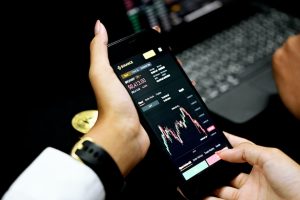In the world of forex trading, there are many technical indicators used by traders to make trading decisions. One such indicator is the stochastic oscillator, also known as “stochastics” or “snd”. Stochastics is a momentum indicator that helps traders identify overbought and oversold conditions in the market, as well as potential trend reversals. In this article, we will explore what stochastics is, how it works, and how traders can use it in their trading strategy.
What is Stochastics?
Stochastics is a technical indicator that was developed by George C. Lane in the 1950s. It is based on the idea that as prices rise, closing prices tend to be closer to the upper end of the price range, and as prices fall, closing prices tend to be closer to the lower end of the price range. The stochastic oscillator calculates the position of the current price relative to the high and low range of a specified period, usually 14 days.
The stochastic oscillator is plotted as two lines, %K and %D. The %K line represents the current price position relative to the range, while the %D line is a moving average of the %K line. The %K line is usually more volatile, while the %D line is smoother and provides a clearer signal.
How does Stochastics work?
The stochastic oscillator measures momentum by comparing the closing price of an asset to its price range over a set period. The range is calculated as the difference between the high and low prices over the same period. The formula for calculating the stochastic oscillator is as follows:
%K = (Current Close – Lowest Low) / (Highest High – Lowest Low) * 100
%D = 3-day simple moving average of %K
The %K line oscillates between 0 and 100, with readings above 80 indicating overbought conditions and readings below 20 indicating oversold conditions. The %D line is used as a signal line, and a buy or sell signal is generated when the %K line crosses above or below the %D line.
Traders can adjust the parameters of stochastics to suit their trading style and the market they are trading. For example, traders can adjust the time period for calculating the range, or they can use a different moving average for the %D line.
How to use Stochastics in forex trading
Stochastics can be used in a variety of ways in forex trading. Here are some common strategies used by traders:
1. Overbought/oversold conditions: Traders can use stochastics to identify overbought and oversold conditions in the market. When the %K line is above 80, the market is considered overbought, and when the %K line is below 20, the market is considered oversold. Traders can use this information to enter or exit trades, depending on their trading strategy.
2. Divergence: Traders can use stochastics to identify divergence between the indicator and the price. Divergence occurs when the price is making higher highs or lower lows, but the stochastic oscillator is not confirming the price action. This can be a sign of a potential trend reversal or a correction.
3. Crossovers: Traders can use the crossover of the %K and %D lines as a buy or sell signal. When the %K line crosses above the %D line, it is a buy signal, and when the %K line crosses below the %D line, it is a sell signal. Traders can use this information to enter or exit trades, depending on their trading strategy.
Conclusion
Stochastics is a popular technical indicator used by forex traders to identify overbought and oversold conditions in the market, as well as potential trend reversals. The stochastic oscillator measures momentum by comparing the closing price of an asset to its price range over a set period. Traders can use stochastics in a variety of ways, including identifying overbought/oversold conditions, divergence, and crossovers. As with any technical indicator, stochastics should be used in conjunction with other indicators and analysis to make informed trading decisions.





